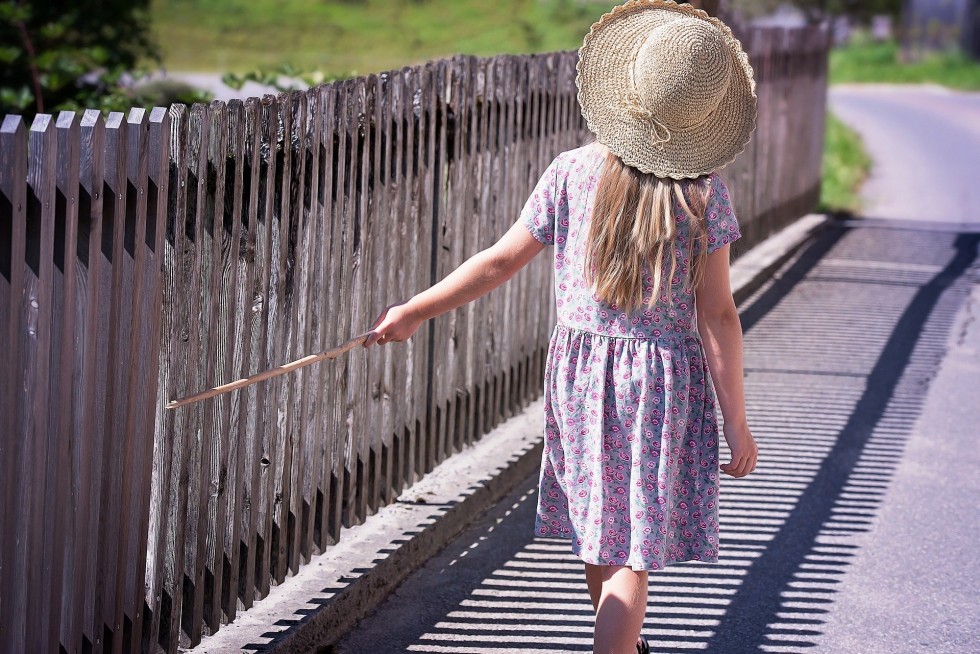To protect yourself from curious neighbors, people’s dogs and other pests or just to outline the borders of your territory in a neat and pretty way you may build a wooden fence. It looks amazing whether you decide to opt for tall security fencing or middle-height one with the gaps between the boards to be able to see through them and don’t be completely nudged aside from the world.
The one thing I can tell you for sure that it’s much easier and cheaper to build this type of fence. Even someone who hasn’t had any constructing experience before may do it. You’ll just need to study different articles and think carefully about design and the best way to carry out your project. HireRush.com will provide contacts of fence contractors you may consult with to get useful tips on fence building from a specialist.
Now, let’s get down to business without further delays.
The preparatory phase
Check out legal grounds
Bear in mind that some municipal ordinances may not permit building any fences. So, it’s better to make sure that you’re actually allowed to do it before starting any preparations.
As it’s very important not to cross the border of your property while installing a fence, you may also go to the city hall to figure that out along with getting an official permission to begin construction work. They may provide you with a plan of your lot, so that you’ll be able to do all necessary measurements in without assigning your neighbors’ land or leaving out a part of yours.
Do you need some help?
If your lot has a weird shape or if it’s located on a bumpy and uneven surface, you may struggle to build a fence yourself. It’s also not recommended to do that on your own if there’re any cables or utility lines lying under the place you want the fence to be on. So, if that’s a case, you should probably let professionals do their job. You may hire fence contractors, who’ll do all the preparation and building tasks in no time. Complicated fence designs require professional assistance as well. If you are residing in Australia, you may contact Sidepost to book fencing contractors in Melbourne, or anywhere near you.
Define the borders of your lot
There’re some other options to distinguish the outer borders of your lot. You may use a metal detector to find the metal underground stakes that mark the corner points of your property line.
If you find one of them with your tool, just grab a stick or something like that to identify them above the ground. Take a builder’s string or a spray paint to outline the place you future fence is going to stand on.
If you’re in good relationships with your neighbors, you may just skip all those steps and negotiate the border with them. Oh, by the way, if you’re going to build a fence right on the border line, it’s better to talk about it with them as well, as it is the place where your lots are joined. They may not like your decision, but they might also agree with it and even help you build the side you share.
Make a plan
As soon as you’re ready with your measurements, sit down, take a deep breath and start developing the plan of your future fence. The one thing you have to determine in the first place is how tall it’s going to be. After you do that, you’ll be able to calculate the amount of required materials and estimate the expenses.
If you want to have a privacy fence, it should be around 6-8 feet tall. The most common mid-height fence is 4’. More decorative, nice and cute one is around 2’-3’. The last fence is just a determination of where your lot ends. And, it just looks adorable.
Decide on the height
When you decide on height, it’s better to get a piece of cardboard to see how your future fence is going to work. It’s crucial if you’re building a privacy one, as you have to make sure that your neighbors and passers-by won’t be able to peep at you and see clearly what you’re doing at the moment. So, grab that cardboard, stand with it on the border line. Have someone walk around and watch from different angles how protected the house will be with the fence this or that tall. Professional fence builders recommend spending some time doing that (and maybe looking like an idiot) then finding out that your neighbors can still see you swimming in the pool or playing with your kids even over a 6’ fence after you’ve already built it.
Moreover, it might turn out that other buildings are situated lower on the ground than your house and that even a 4’ fence is enough to protect you from curious onlookers. Then, you’ll save some money on materials.
Choose the fence’s shape: the top part might be straight, arched or scallop. Also, you don’t necessarily need to build a fence of the same height all the way around your plot. You may set up a nice low one with gaps between the planks in front of the front yard and make it taller on the sides that are adjacent to your neighbors’ houses. You may opt for cheaper materials for the latter part as well.
Tools and materials
You won’t need too much tools to build a wooden fence. You’ll find almost all of them in your own tool box. Although some of the things you might still have to get. Those are the electric circle saw (or just plain manual one), a post-holer or a shovel to dig the holes with, a chisel and a nail gun if you don’t want to do too much work with your hammer. Find an old bucket to mix the cement in, as you probably won’t be able to reuse it afterwards. Builder’s string, rubber gloves and protecting glasses will help you out as well. A post level is a must-have to keep your fence straight.
Regarding the materials, you’ll obviously need wooden posts, rails and boards, instant cement or plain cement mixture. In addition to that, get the wood paint, stain or finish.
As soon as all preparations are finished, it’s time to start building.

Here’s an easy step-by-step guide of how to build a fence.
- As you’ve found the border line of your lot, put wooden stakes or other similar marks on corner points of your future fence. Add several supporting stakes in between the main ones. The points you’ve inserted your reference marks in will define positions to secure the posts in. The distance between them has to be 8’ maximum, otherwise your fence may sag as the posts and rails won’t be able to handle the boards’ weight.
- Make sure that the corners are 90o. For that matter, run a builder’s string between all your marks at the same level. Then, go to the two crossing sides and measure 3’ and 4’ on both sides of the string. If the distance between those two points (the legs of the Archimedes triangle) is 5’, then the corners are good to go. If not, you should fix them using a square level.
- Make the holes with the help of a post-hole. They should be around 2-2.5’ deep. Dig them wide enough to fit the posts and add some gravel and cement solution in them.
- Prepare your instant cement or proper cement solution according to the instructions, provided on the package.
- Start placing the posts. Fill your hole up to 1/3 with gravel and set up a post in it. Adjust it until it’s perfectly straight using a post level and try to hold them in place while pouring the cement solution almost up to the hole’s top.
Here you might need a spare pair of hands, so ask your friend or family member to hold a post while you’re filling the hole.
Hiring a handyman is a good idea, as he might help you not only with this task, but also throughout the whole planning and building process. - As the mixture won’t dry up immediately, you may use several supporting boards to stabilize the posts and retain them in correct position.
Let everything set for 2 days. - When the cement is rock hard, you may continue your project and start attaching the rails to the posts. It’s better to opt for 2 or even 3 rows of railing (depending on the height of your fence) to ensure the sturdiness and durability. Don’t forget to use your post level to make everything look nice and even.
Secure the rails with nails or decking screws.
Most of the fence posts come with already pre-cut holes for rails, but if your ones don’t, it’s better to make them before mounting the posts. - When the rails are ready, go ahead and start attaching the boards using a nail gun. Use the leveling tool on the first 3-4 pickets to do everything right. As you move further, check every 7 or 10 of them. If you’re building a fence with gaps in between the boards, use a spare plank or a pre-cut one (in case you want narrower gaps) to provide the same distance.
- Once you’ve finished adding the boards, make sure that they’re even at the top.
- Paint or stain your fence when it’s completely ready. But if you used untreated wood, leave it for several months to dry before applying any paint or other finish.
If the task seems too difficult for you, then don’t hesitate and hire a fence contractor. Choose one of the ads from Outdoor Contractors section on HireRush.com, contact one of the professionals and make the process effortless for you.






Such a very helpful article, this help to decide what is the best for my home.
Thank you for your feedback!
This site is very helpful and very informative this will help a lot of people.
Thank you!
This is an awesome read. Thanks for sharing this to us!
You are welcome! Stay tuned! There will be even more useful tips for you in future!
I found this guide to be an excellent resource. The detailed instructions and clear illustrations make it easy for anyone to understand the process. I appreciate the practical tips on selecting materials and ensuring proper alignment. This guide is a great starting point for anyone looking to build a sturdy and attractive fence on their property!